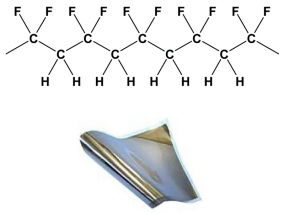Physical Sensors
A physical sensor is a device that measures a physical quantity (like temperature) and converts it into a signal which can be read by an observer or by an instrument. One of the most interesting application fields for OS-based devices is certainly the area of sensors, as smart sensing systems can be fabricated at low costs on unconventional, highly flexible, and possibly compliant substrates; moreover, they can be easily transferred into clothes for the realization of wearable electronics or even employed for the fabrication of electronic skin. In the last decade, a rising interest has been directed to the development of novel technologies for reproducing the sense of touch for a large set of possible applications such as prosthetics, human-robot interaction, and rehabilitation. To date, most reported approaches are based on capacitive devices, piezoresistive devices or pyroresistive devices in which the transduction mechanism is due to a modulation of resistance, or capacitance, of a particular material, caused by an applied thermal/mechanical stress. Our approach is based on a particular implementation of FET structure, called OCMFET, coupled with a particular pyroelectric/piezoelectric organic material. These materials have the property of separate charge, due to a change of their polarization, when they are subjected to thermal or mechanical stress. For this reason, if it’s possible to connect a pyro/piezoelectric material with the floating gate of the OCMFET, it is possible to shift the threshold voltage of the transistor applying thermal or mechanical stress to the material. In our approach, we used a particular polymeric pyro/piezoelectric industrial material (PVDF) wire connected with the floating gate. PVDF is a highly non-reactive and pure thermoplastic fluoropolymer produced by the polymerization of vinylidene difluoride.
Depending on the crystallization conditions, PVDF can crystallize into different structures, the most common are alpha form, beta form, gamma form and delta form. The most important for our purpose is the beta form: indeed, in this form, PVDF is a ferroelectric polymer, and it exhibits efficient piezoelectric and pyroelectric properties. It has become very attractive as functional material for high-tech applications due to a number of excellent inherent physical properties. For example, it can be used as an high-k dielectric in logic gates based on OTFTs; thanks to a remaining polarization charge, it can be used as a charge storage dielectric in non-volatile memory elements; thanks to a high pyro-piezo coefficient, it can be used as a sensor or a transducer.
EXPERIMENTAL RESULTS:
Related publications:
- P. Cosseddu, F. Viola, S. Lai, L. Raffo & A. Bonfiglio: “A Temperature Transducer Based on a Low- Voltage Organic Thin-Film Transistor Detecting Pyroelectric Effect”, IEEE Electron Device Letters, Volume 35, Issue 12, pp. 1296-1298, December 2014
- P. Cosseddu, F. Viola, S. Lai, L. Raffo, L. Seminara, L. Pinna, M. Valle, R. Dahiya & A. Bonfiglio: “Tactile Sensors With Integrated Piezoelectric Polymer and Low Voltage Organic Thin-Film Transistors”, IEEE Sensors 2014, Valencia, Spain, Nov 2-5, 2014, pp. 1734-1736



